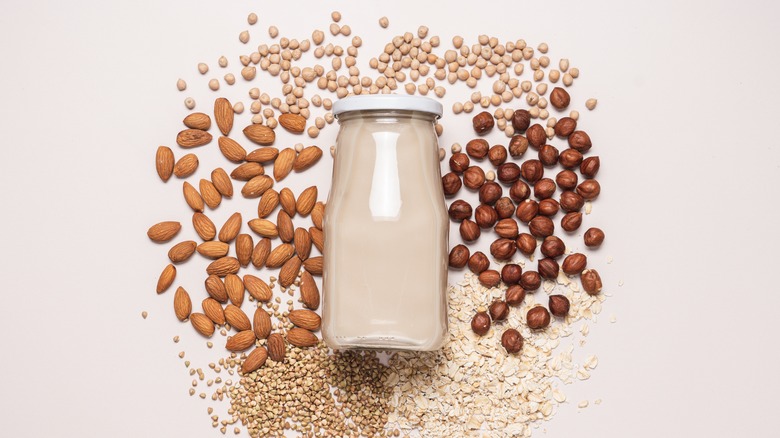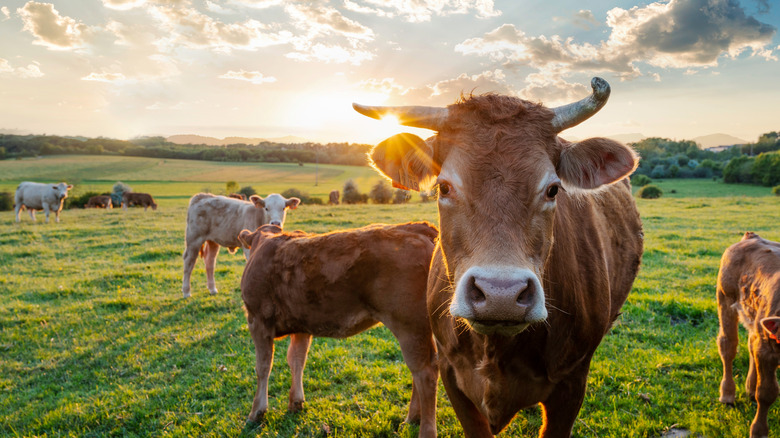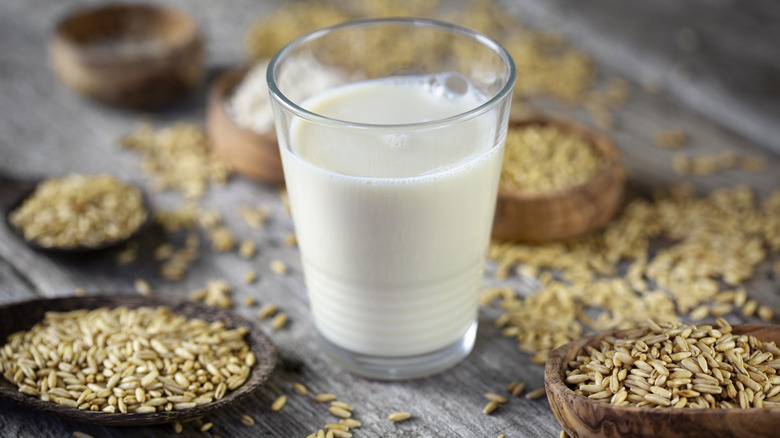Yes, There's A Difference Between Non-Dairy And Dairy-Free Foods
It's entirely possible that, for you, the comparative meanings of non-dairy versus dairy-free food are a distinction without a difference. Don't they refer to the same thing, at least semantically? Technically yes, but there is in fact a huge difference between the two — especially if you suffer from a potentially life-threatening milk allergy. In essence, non-dairy foods are those that don't come from dairy animals like cows, sheep, and goats (but which can still contain milk proteins — yes, it's complicated), while dairy-free implies a vegan product that should contain no milk, eggs, or cheese. We say "should" because the former is FDA-regulated, while the latter is not (speaking of dairy-free, banana milk exists and we're obsessed).
The bottom line is that, according to the Mayo Clinic, a person with a milk allergy can have a reaction to so-called non-dairy foods because the FDA allows them to contain milk proteins like casein and whey, which will cause their immune system to malfunction. To underscore the seriousness of this, milk is the most common cause of anaphylaxis after peanuts and tree nuts. Therefore, it's very, very important to know what you're putting in your body.
Non-dairy, a regulatory sop to the dairy industry
The USDA defines dairy as one of the five food groups that include milk (including the lactose-free variety), yogurt, cheese, and fortified soy milk (higher-fat foods like cream cheese and butter are excluded from the dairy group) The government defends this definition based on these foods' nutrient composition and use by consumers.
Needless to say, the dairy industry has never liked this idea. One recent example of pushback took the form of a March 2023 letter by Wisconsin politicians to the FDA complaining of its dairy group guidance and insisting that products made from algae, plants, nuts, and seeds continue being labeled "non-dairy" because they don't come from dairy animals. No one has a word to say about the exclusion of milk proteins in non-dairy foods, so these should still be considered off-limits for people with allergies, or at the very least worthy of close scrutiny.
Dairy free to be... you and me
As previously noted, the "dairy-free" label is not defined by government regulation. Because the FDA has not given any specific direction on what kind of foods can carry this label — or any assurances that they're actually free of milk products — it's up to you to find out exactly what's on offer by reading its label of ingredients. The fact is that some products labeled non-dairy have been shown to contain milk or milk derivatives; sometimes the label's been used for products that have little or no lactose (lactose-free is not the same as dairy-free: Lactose intolerance, though unpleasant in its effects, is not an immune system response and therefore not potentially life-threatening).
So, if you're vegan or suffer from a milk allergy, it's up to you to read the label of every non-dairy or dairy-free product before you buy to be certain that it's genuinely free of milk or its derivatives. Honestly, this is a good habit for everyone to get into, because the things we put into our bodies uncritically might contain way more sugar or fat — or milk proteins — than we're willing to consume.


